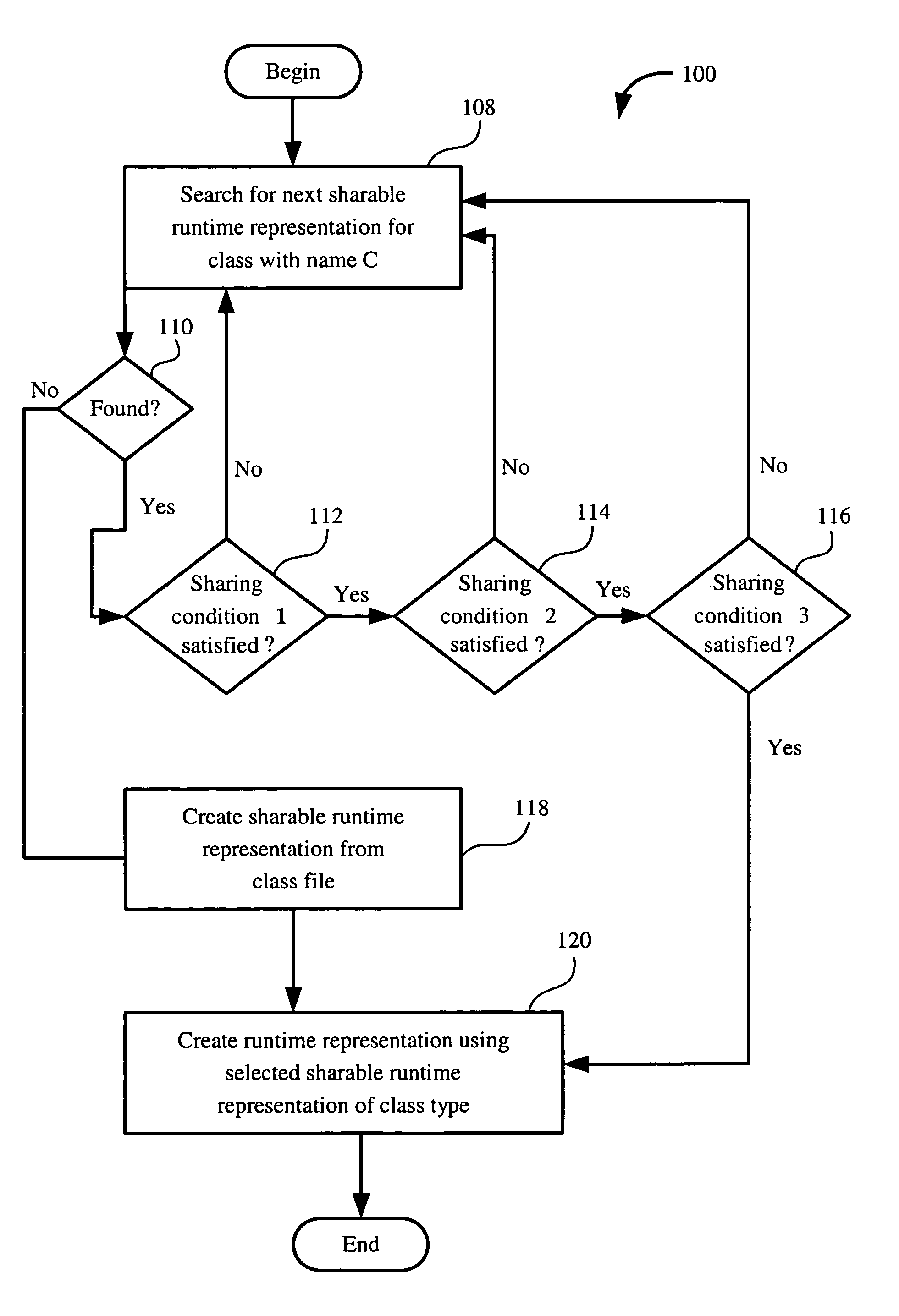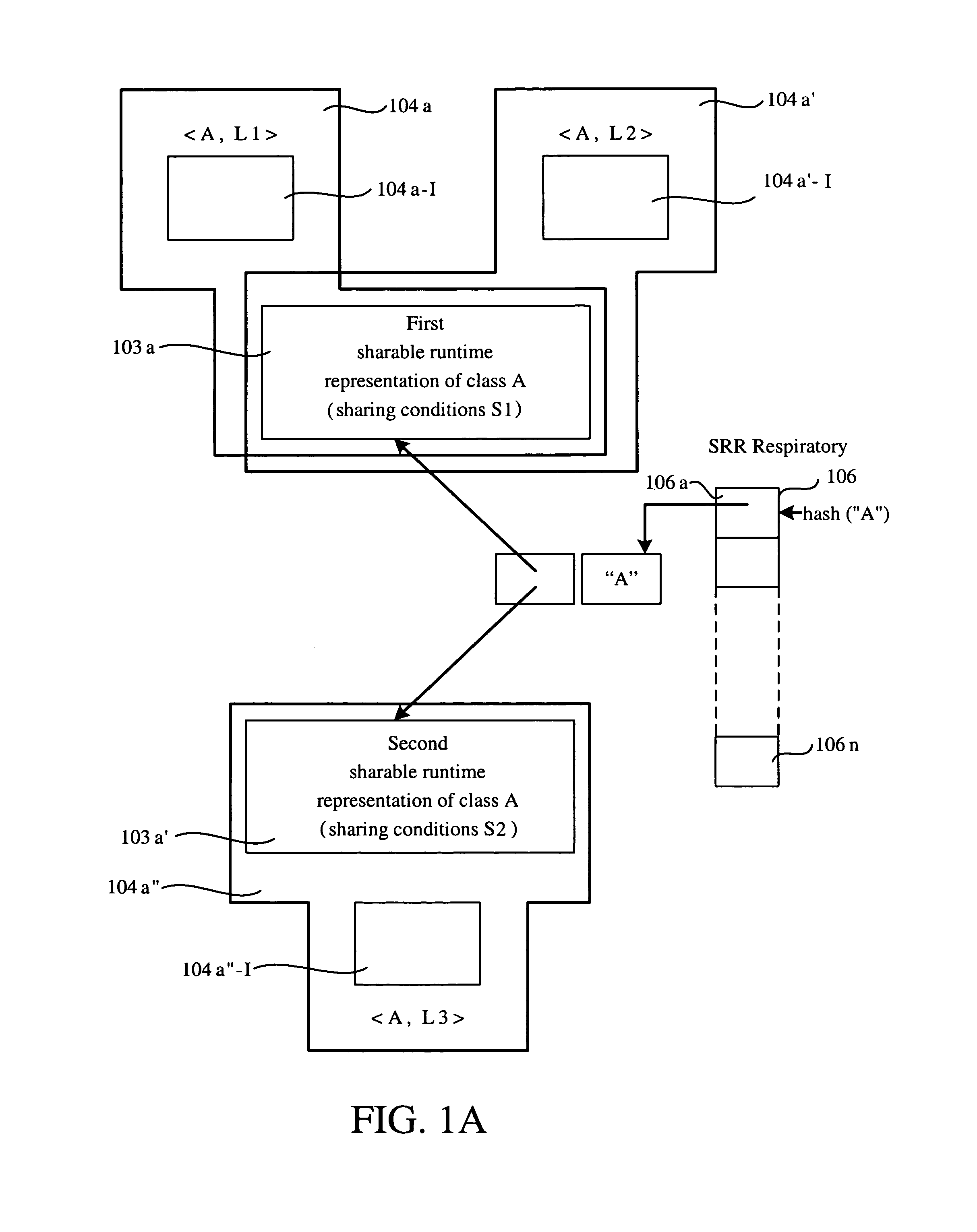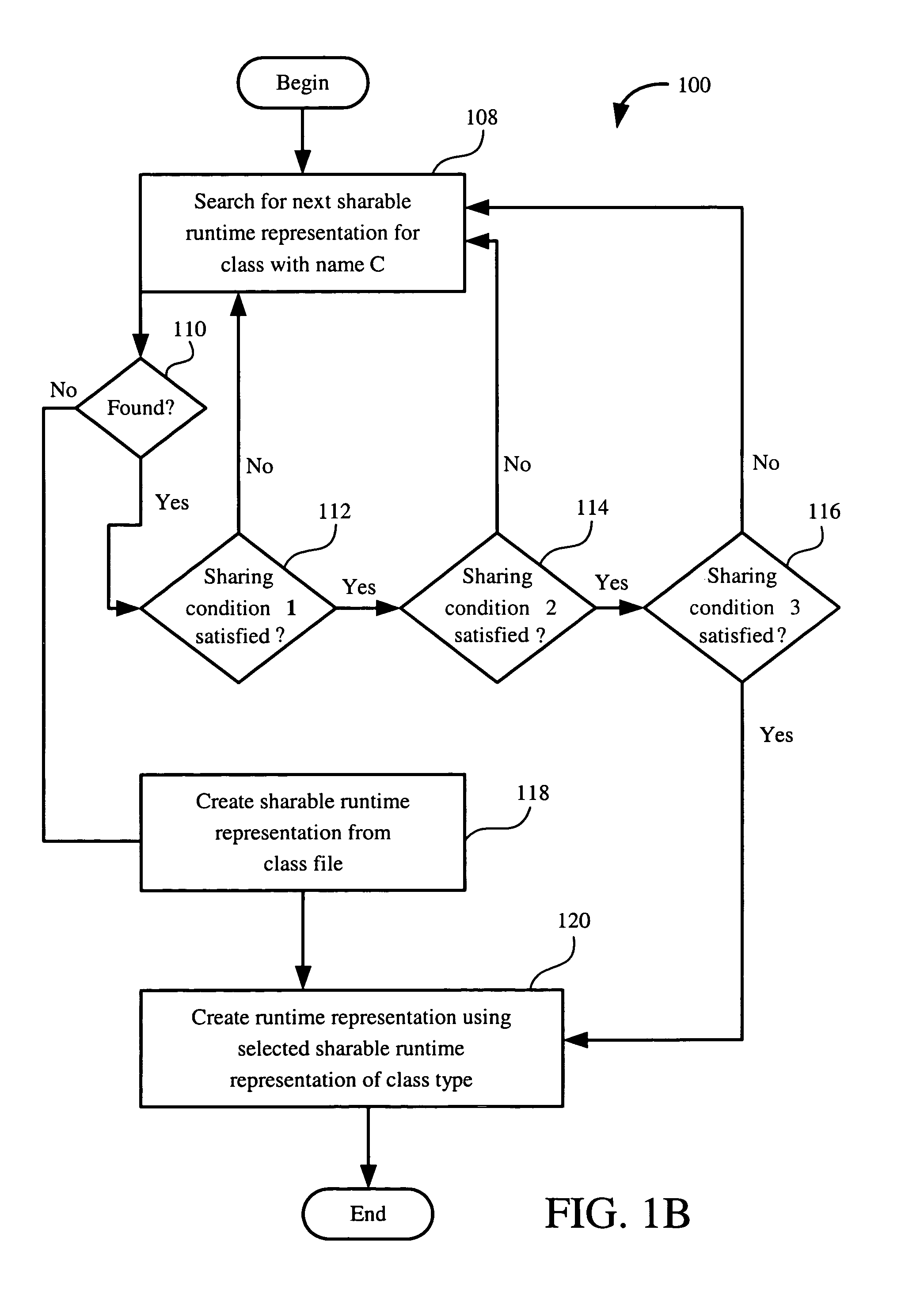Method for sharing runtime representation of software components across component loaders
a component loader and runtime representation technology, applied in the field of Java TM platform, can solve the problems of unnecessarily repeating the effort in creating an optimized runtime representation, unnecessarily re-replicating the runtime representation of classes in memory, and not coming without a cost of using class loaders, so as to reduce runtime costs and increase main memory conservation
- Summary
- Abstract
- Description
- Claims
- Application Information
AI Technical Summary
Benefits of technology
Problems solved by technology
Method used
Image
Examples
Embodiment Construction
[0046]Inventions for reducing main memory usage and runtime costs by sharing a portion of the runtime representation of a software component across a plurality of component loaders are provided. Several exemplary embodiments of the invention will now be described in detail with reference to the accompanying drawings.
[0047]The embodiments of the present invention provide methods and systems for sharing a portion of runtime representation of a software component across a plurality of component loaders. In one embodiment, software components are classes and component loaders are class loaders. According to one implementation, the runtime representation of a class is divided into two parts, a class loader independent part, and a class loader dependent part. The class loader independent part can include most of the runtime representation of a class and is sharable across multiple class loaders that define the class and satisfy a set of sharing conditions. The class loader dependent part ...
PUM
 Login to View More
Login to View More Abstract
Description
Claims
Application Information
 Login to View More
Login to View More - R&D
- Intellectual Property
- Life Sciences
- Materials
- Tech Scout
- Unparalleled Data Quality
- Higher Quality Content
- 60% Fewer Hallucinations
Browse by: Latest US Patents, China's latest patents, Technical Efficacy Thesaurus, Application Domain, Technology Topic, Popular Technical Reports.
© 2025 PatSnap. All rights reserved.Legal|Privacy policy|Modern Slavery Act Transparency Statement|Sitemap|About US| Contact US: help@patsnap.com



